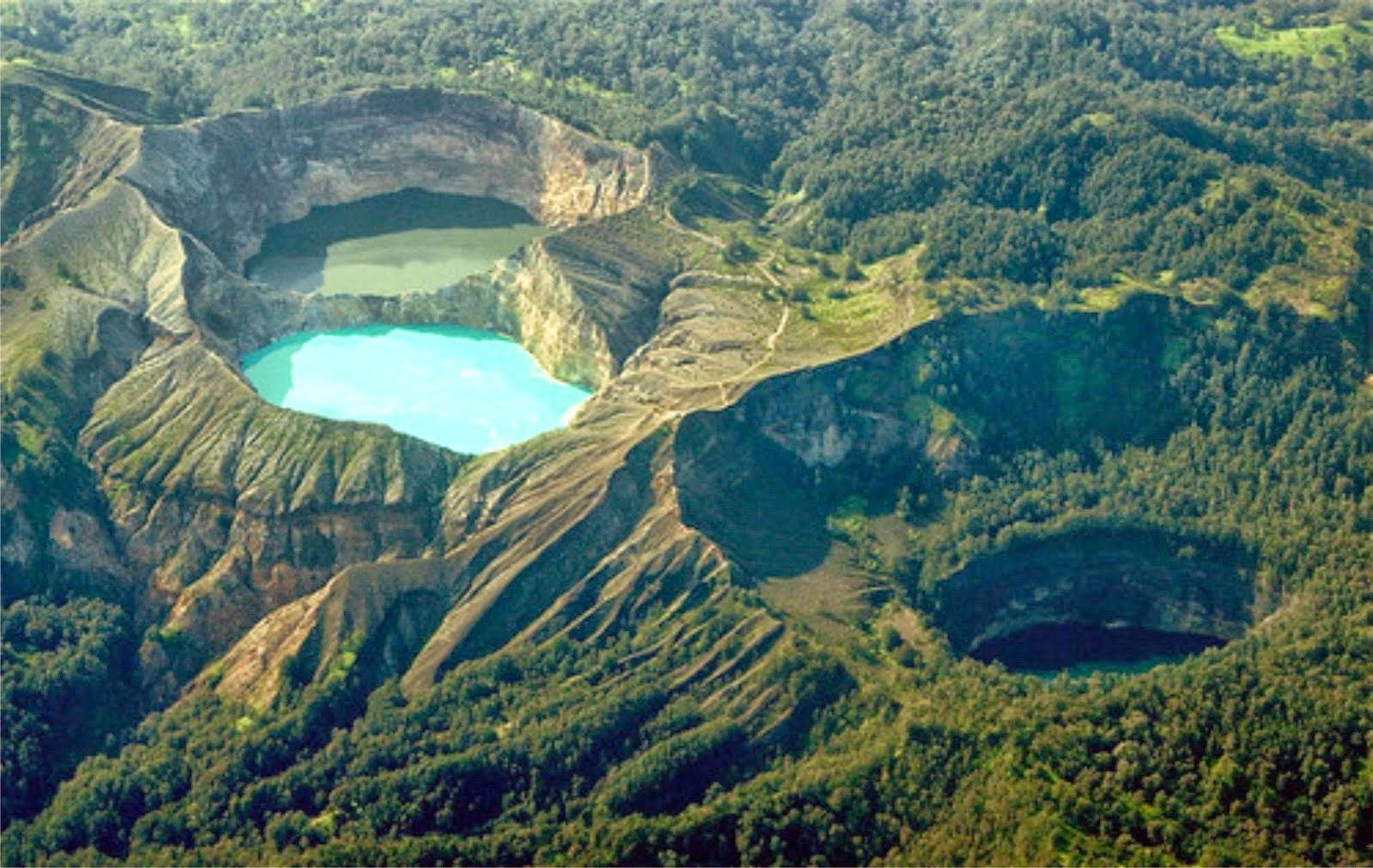 |
| Beautiful Kelimutu Lake - Flores |
The uniqueness of colors that makes the tourists visiting this attraction. Kelimutu itself is a combination of the word "keli" meaning mountain, and "mutu" which means to boil. The lake is located in the village Pemo, District Flores, Ende, East Nusa Tenggara. To reach this lake, tourists have to travel about 45 miles from Ende or 13 miles from the village of Moni.
Lake Flores popularized a Dutch citizen named Van Such Telen in 1915. The beauty more widely known after it. Bouman describes the beauty and the lake water discoloration in his writings in 1929.
 |
| Kelimutu Lake Flores |
Lake Kelimutu is part of the Kelimutu National Park. The highest point of the park is 5.679 feet, located in Kelibara Mountain (1,731 meters) and Mount Kelimutu 5,544 feet or (1,690 meters). Kelimutu National Park is home to around 19 species of endangered birds including Punai Flores (Treron florists), Wallacea Owl (Otus silvicola), ikatan rimba-ayun (Rhinomyias oscillans), Kancilan Flores (Pachycephala nudigula), Sepah Kerdil (Pericrocotus lansbergei), Tesia Timor (Tesia everetti), Opior Jambul (Lophozosterops dohertyi), Opior Paruh Tebal (Heleia crassirostris), Cabai Emas (Dicaeum Annae), Kehicap Flores (Monarcha sacerdotum), Burung Madu Matari (Nectarinia solaris), and Flores Eagle (Spizaetus florists).
No comments:
Post a Comment